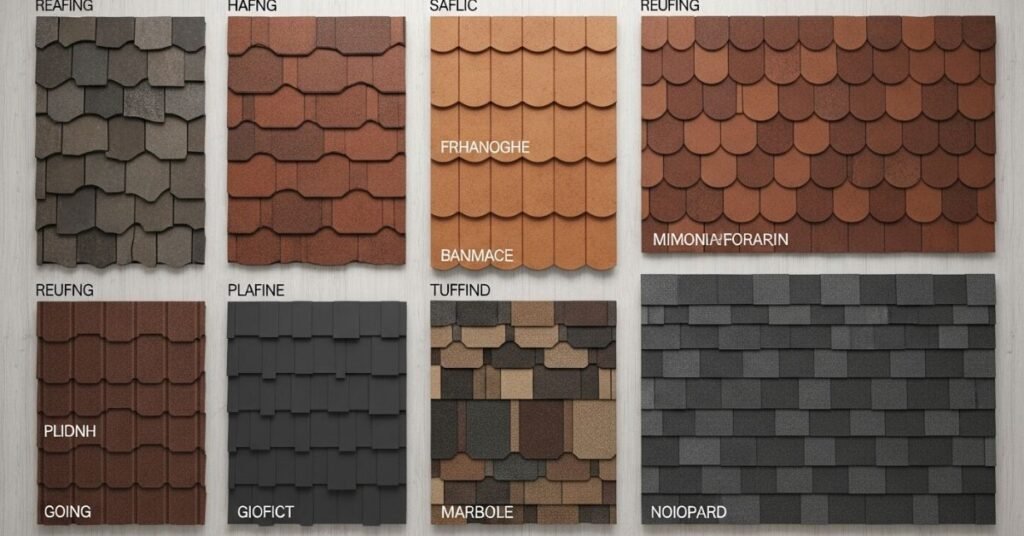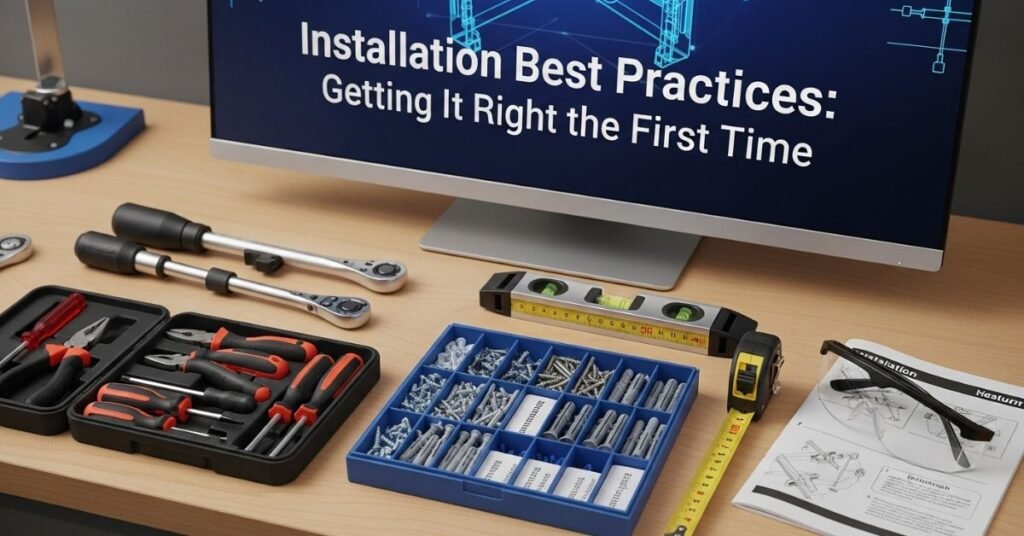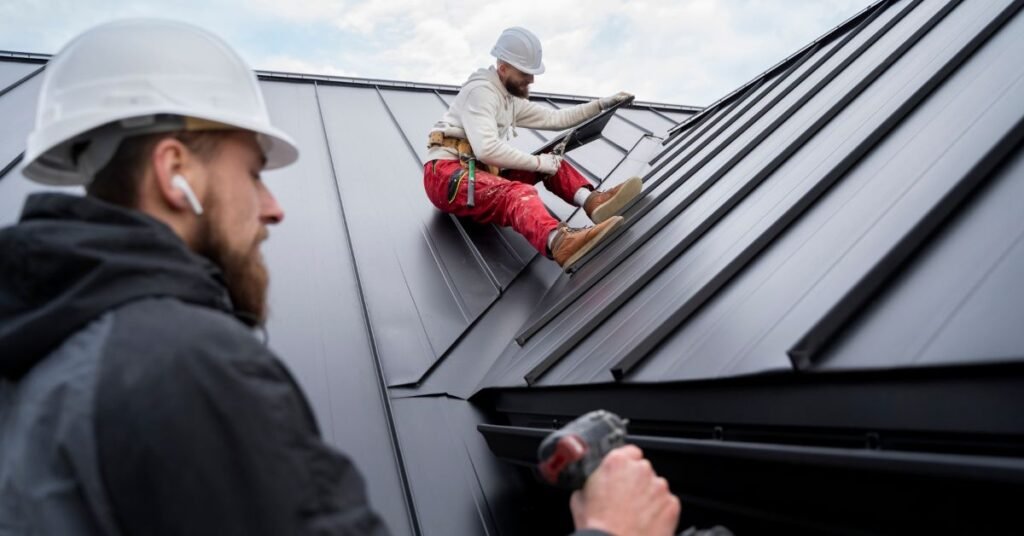Your building’s roof is its first line of defense against the elements. While shingles, membranes, and flashing get most of the attention, a critical component often goes overlooked: the roofing cop. This essential element protects the most vulnerable part of your structure—the top of the parapet walls. Ignoring it can lead to costly water damage, structural decay, and safety hazards.
Understanding roofing cop is not just for contractors or building managers; it’s for any property owner who wants to ensure the long-term integrity and safety of their investment. A properly installed coping system is the finishing touch that seals your building envelope, preventing moisture from seeping into the walls where it can cause mold, rot, and compromise the entire structure.
This comprehensive guide will walk you through everything you need to know about roofing cop. We will explore what it is, the different materials used, and why it is so crucial for your building’s health. We’ll cover installation best practices, signs of failure, and the maintenance required to keep it performing at its best. By the end, you’ll have the knowledge to make informed decisions that protect your property for years to come.
What Exactly Is Roofing Cop?
roofing cop is the protective cap or covering installed on top of a parapet wall. A parapet is a low protective wall that extends above the roofline. You can find these walls on flat or low-slope roofs, balconies, and along the edges of terraces. The coping acts as a shield, covering the exposed top surface of this wall.
Its primary function is to prevent water—rain, snow, and ice—from penetrating the wall assembly. Without coping, the top of the parapet wall would be exposed, allowing moisture to saturate the masonry or underlying structure. This water intrusion is a direct path to significant and expensive problems.
Think of it like the cap on a fence post. An uncapped post will quickly absorb water, leading to rot and decay from the inside out. roofing cop provides the same essential protection for your building’s walls, directing water away from the structure and ensuring everything below it stays dry and secure.
Want to learn more? Check out these related articles.
The Critical Difference: Coping vs. Flashing
While both are used to manage water, coping and flashing serve distinct purposes. It’s important to understand the difference.
- Roofing cop: This is a component installed exclusively on the top of a wall, typically a parapet. It is the final piece that covers the highest point of the wall structure. Its design is three-sided—covering the top and extending down both the interior and exterior faces of the wall.
- Flashing: This is a broader term for thin pieces of impervious material installed to prevent water from entering a structure at joints or intersections. You’ll find flashing around chimneys, vents, skylights, and where a roof meets a vertical wall (wall flashing). It directs water down and away from these vulnerable points.
In summary, coping is a specific type of cap for a wall, while flashing is a more general term for waterproofing various joints and penetrations on a roof system. Often, coping systems will integrate with flashing to create a continuous, watertight barrier.
Why Roofing Cop is Non-Negotiable for Building Protection

A properly designed and installed coping system is not a luxury; it’s a fundamental requirement for any building with parapet walls. Its importance extends far beyond simple aesthetics, playing a vital role in structural integrity, safety, and longevity.
Preventing Water Intrusion and Structural Damage
The number one job of roofing cop is to keep water out of the wall assembly. When water penetrates a parapet wall, it can trigger a cascade of destructive events:
- Masonry Deterioration: In brick or block walls, trapped moisture can lead to efflorescence (white, powdery salt deposits) and spalling (flaking or chipping of the surface). During freeze-thaw cycles, this trapped water expands, causing cracks and breaking the masonry apart from the inside.
- Corrosion of Structural Components: Water that seeps into the wall can rust steel reinforcements, lintels, and fasteners. This corrosion weakens the structural support of the wall, posing a serious safety risk.
- Mold and Mildew Growth: Damp, dark spaces within a wall cavity are perfect breeding grounds for mold and mildew. This not only damages building materials but also creates significant indoor air quality issues, which can be harmful to occupants’ health.
Enhancing Wind Uplift Resistance
Parapet walls are highly susceptible to wind forces, especially at the corners and edges of a roof. Wind flowing over a roof creates negative pressure, or suction, that tries to lift components off the building. roofing cop, when installed correctly, helps to secure the roofing membrane at the perimeter and anchor the top of the wall.
Industry standards, such as those from the Sheet Metal and Air Conditioning Contractors’ National Association (SMACNA), provide strict guidelines for fabricating and securing coping to withstand specific wind uplift pressures. A properly anchored coping system prevents the edges of the roof from peeling away during a severe storm, which could otherwise lead to a catastrophic roof failure.
Ensuring Safety for People Below
A failed coping system is a serious safety hazard. Metal coping sections that become loose due to corrosion or improper fastening can be dislodged by high winds. A heavy piece of metal falling from a rooftop can cause severe injury or death to anyone below, as well as significant damage to property. Regular inspections and proper maintenance are essential to ensure all coping sections are securely attached and in good condition.
Improving Building Aesthetics
While its primary functions are protective, roofing cop also provides a clean, finished look to the building’s exterior. It creates a crisp, defined line at the top of the structure, enhancing its architectural appeal. With a wide range of materials and colors available, coping can be customized to complement the building’s design, turning a functional necessity into an aesthetic asset.
An In-Depth Look at Roofing cop Materials

The choice of material for your roofing cop depends on several factors, including budget, climate, building design, and desired longevity. Each material offers a unique set of advantages and disadvantages.
Metal Coping: The Industry Standard
Metal is the most common and widely recommended material for roofing cop due to its durability, longevity, and excellent water-shedding properties.
Steel (Galvanized and Galvalume)
- Galvanized Steel: This is carbon steel coated with a layer of zinc to prevent corrosion. It is a cost-effective and strong option. However, if the zinc coating is scratched or compromised, the steel beneath can rust.
- Galvalume Steel: This steel is coated with a blend of aluminum and zinc. It offers superior corrosion resistance compared to standard galvanized steel, especially in marine or industrial environments. It is often preferred for its longer lifespan.
Aluminum
Aluminum is a popular choice because it is lightweight, naturally corrosion-resistant, and easy to fabricate. It can be pre-finished in a vast array of colors to match any building aesthetic. While more expensive than steel initially, its longevity and low maintenance requirements can make it more cost-effective over time. Its lightweight nature also reduces the structural load on the parapet wall.
Copper and Stainless Steel
- Copper: Renowned for its beauty and exceptional lifespan, copper is a premium coping material. It is extremely resistant to corrosion and will develop a distinctive green patina over time. It is a high-end choice often used for historic restoration projects or prestigious new buildings where aesthetics and longevity are paramount.
- Stainless Steel: Offering modern appeal and superior strength, stainless steel is highly resistant to rust and staining. It is a durable, low-maintenance option suitable for contemporary designs and harsh environments. Like copper, it is a premium material with a higher upfront cost.
Stone Coping: Classic and Durable
For masonry buildings, stone coping offers a traditional and elegant finish.
Precast Concrete
Precast concrete coping is molded in a factory setting, ensuring quality and consistency. It is very durable, heavy, and provides excellent protection. It can be manufactured in various shapes and colors and often includes a drip edge to direct water away from the wall face. Its weight helps anchor the top of the wall, but it requires a robust wall structure to support it.
Natural Stone (Limestone, Granite, Sandstone)
Natural stone provides a timeless and high-end appearance. Each type of stone has unique characteristics:
- Limestone: A classic choice that offers a sophisticated look but can be porous and may require sealing.
- Granite: Extremely hard and durable, granite is resistant to weathering and requires minimal maintenance.
- Sandstone: Offers a natural, textured look but varies in porosity and durability depending on its composition.
Stone coping pieces are heavy and require skilled masons for proper installation with mortared joints.
Other Materials
While less common, other materials are sometimes used for specific applications:
- Terra Cotta: This clay-based ceramic material offers a classic, rustic look, often seen on historic or Mediterranean-style buildings. It can be fragile and susceptible to damage from impacts or severe freeze-thaw cycles.
- Composite Materials: Newer composite products are emerging that mimic the look of traditional materials but offer enhanced performance, such as lighter weight or greater impact resistance.
The Anatomy of a High-Performance Coping System
A successful roofing cop system is more than just a single piece of metal or stone. It’s an assembly of components working together to create a waterproof and secure barrier.
Key Components
- Coping Cap: This is the main, visible part of the system. It covers the top of the parapet wall and extends down the sides. Its design must include a slope to direct water toward the roof side, not the building exterior.
- Cleats (or Anchor Plates): These are concealed brackets, typically made of heavy-gauge metal, that are securely fastened to the top of the parapet wall. The coping cap is then snapped or hooked onto these cleats. This method provides superior wind uplift resistance and allows for thermal expansion and contraction of the metal coping without compromising the fasteners.
- Splice Plates: At the joints between two sections of coping, a splice plate is used to create a weather-tight seal. This plate is typically installed underneath the joint and is often bedded in sealant to prevent water from penetrating the seam.
- Fasteners: The choice of fasteners is critical. They must be corrosion-resistant and compatible with the materials they are securing. Using the wrong type of fastener can lead to galvanic corrosion, where two dissimilar metals react and degrade, causing the connection to fail.
- Sealant: High-quality, UV-stable sealant is used at joints, corners, and end caps to ensure a watertight seal. The sealant must be able to accommodate the movement of the coping system due to thermal changes.
Essential Design Features
- Drip Edge: A hemmed or angled edge at the bottom of the coping’s vertical faces. The drip edge ensures that water running off the coping drips clear of the building wall, preventing staining and moisture penetration at lower levels.
- Slope: The top surface of the coping should be sloped inward, toward the roof. This ensures that the majority of rainwater is directed onto the roof, where the drainage system can manage it, rather than down the building’s exterior facade.
- Thermal Expansion Joints: Metal expands and contracts with temperature changes. A long run of coping must be designed with expansion joints to accommodate this movement. Without them, the metal can buckle, warp, or pull fasteners loose, leading to system failure.
Installation Best Practices: Getting It Right the First Time

Proper installation is just as important as the quality of the materials. A poorly installed coping system will fail, no matter how expensive the materials are. Adherence to manufacturer specifications and industry standards like SMACNA is essential.
Pre-Installation Checks
- Structural Integrity: Before installing coping, the parapet wall itself must be inspected. It must be structurally sound, dry, and provide a solid substrate for anchoring the cleats. Any necessary repairs to the wall should be completed first.
- Wood Nailers: A pressure-treated wood nailer (or blocking) is often secured to the top of the parapet. This provides a solid, continuous base for attaching the anchor cleats. The wood must be properly secured to the wall structure.
- Underlayment/Membrane: A layer of roofing membrane or self-adhered underlayment should be installed over the top of the parapet wall, under the coping system. This acts as a secondary line of defense against any moisture that might find its way past the coping.
The Installation Process
- Secure the Cleats: The anchor cleats are fastened securely to the wood nailer or wall top at specified intervals. The spacing is determined by the project’s wind uplift requirements—closer spacing is needed in high-wind zones.
- Install Splice Plates: At every joint location, a splice plate is installed. Sealant is often applied between the cleat and the splice plate.
- Place the Coping Sections: The first section of coping is hooked onto one side of the cleats and then snapped down onto the other side. A small gap (typically 1/4″ to 3/4″) is left between coping sections to allow for thermal expansion. The splice plate underneath covers this gap.
- Secure the Joints: Depending on the system, the joints are either left open with the concealed splice plate managing water, or they are covered with a decorative cover plate that is snapped or screwed into place. High-quality sealant is applied where specified.
- Fabricate Corners and End Caps: Corners and end caps are the most complex parts and require skilled fabrication. They must be carefully measured, cut, welded, and sealed to ensure a continuous, watertight transition.
A common installation mistake is “face-fastening,” where screws are driven directly through the top or face of the coping. This practice creates holes that are prime locations for leaks and should be avoided. A properly designed system uses concealed clips and cleats for attachment.
Identifying Problems: Signs Your Roofing cop is Failing
Regular inspection is key to catching problems early, before they lead to major damage. When inspecting your roofing cop, look for these common signs of failure:
- Open Seams or Joints: Gaps between coping sections are a clear sign of trouble. This could be due to thermal movement, sealant failure, or improper installation. These openings allow water to pour directly into the wall.
- Corrosion and Rust: Rust spots on steel coping or staining on the wall below indicate that the protective coating has failed and the metal is corroding. This weakens the coping and the fasteners holding it in place.
- Loose or Dislodged Sections: Any section of coping that is loose, rattling, or visibly lifted is a major concern. This indicates a failure of the anchoring system and poses a significant wind and safety hazard.
- Water Stains on the Wall: Dark streaks or stains on the building facade directly below the coping are a classic sign that water is running behind it instead of dripping clear from the drip edge. This could be due to a failed seal, an improper slope, or a missing drip edge.
- Cracked or Crumbling Mortar (Stone Coping): For stone coping, deteriorating mortar joints create a direct path for water intrusion. These joints need to be repointed periodically.
Maintenance and Repair: Protecting Your Investment

A proactive maintenance plan can dramatically extend the life of your roofing cop and prevent costly repairs.
- Semi-Annual Inspections: Inspect the coping system at least twice a year, ideally in the spring and fall, and after any major storm event. Look for the signs of failure listed above.
- Clear Debris: Remove any leaves, branches, or other debris that may have accumulated on or against the coping. Debris traps moisture and can accelerate corrosion.
- Sealant Maintenance: Over time, sealant can dry out, crack, and lose its elasticity. Inspect all sealed joints and re-seal any that show signs of degradation. This is one of the most critical maintenance tasks.
- Minor Repairs: Address small issues immediately. If a fastener is loose, tighten or replace it. If a small area of coating is scratched, touch it up with a compatible paint to prevent rust.
- Professional Assessment: If you notice widespread issues like multiple loose sections or significant corrosion, it’s time to call a professional roofing contractor who specializes in architectural sheet metal. They can assess the overall condition of the system and recommend a plan for repair or replacement.
A full coping replacement is a major project, but it is far less expensive than repairing widespread structural damage caused by years of unchecked water intrusion. Investing in a high-quality coping system and maintaining it properly is one of the smartest decisions a building owner can make.
Want to learn more? Check out these related articles.
Conclusion
roofing cop may not be the most visible part of your building, but its role in protecting your investment is immense. As the capstone of your building’s defense system, it shields the vulnerable parapet walls from the relentless assault of water, wind, and weather. A failing coping system is a gateway to structural decay, mold, and safety hazards that can devalue your property and endanger its occupants.
By understanding the function of coping, choosing the right materials, and insisting on expert installation, you are making a critical investment in your building’s longevity. Remember that a high-performance system is more than just a piece of metal; it’s a complete assembly of cleats, splice plates, and fasteners designed to work in unison.
Take the time to inspect your coping regularly and address small issues before they become catastrophic failures. By giving this crucial component the attention it deserves, you ensure your roof’s perimeter is strong, safe, and secure for decades to come.
If you have concerns about your current roofing coping or are planning a new construction project, don’t leave it to chance. Contact a qualified and experienced roofing professional today. A thorough inspection and expert advice can provide peace of mind and protect your property from the top down.


